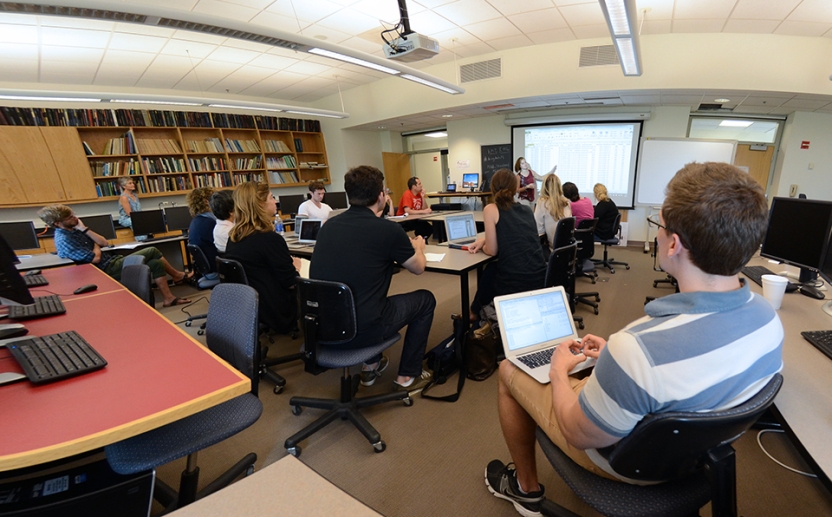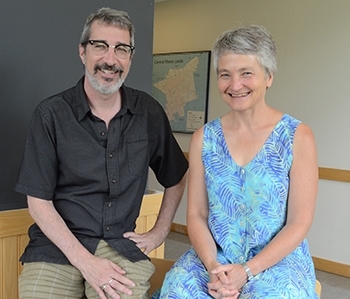Institute Merges Art History with Digital Mapping

MIDDLEBURY, Vt. – Fifteen art historians from around the country have been at Middlebury for two weeks using geographic information systems (GIS) software to break new ground in their respective fields of study.
The first Summer Institute on Digital Mapping and Art History, which comes to a close on August 15, was funded by the Samuel H. Kress Foundation and held at Middlebury College.
From the mapping of French noblewomen’s patronage of the arts in medieval times to an analysis of ephemeral public art in lower Manhattan from 1967 to 1977, the Institute’s fellows – university professors, graduate students, museum curators, and scholars – are using the tools of today’s geographers to look at objects and spaces over time in ways never before possible.
Directed by Middlebury Professor of Geography Anne K. Knowles and DePaul University Professor of Art History Paul Jaskot, the Institute was conceived by Knowles and Jascot to put the power of GIS in the hands of today’s art historians.
“The field of art history is very conscious of space in terms of buildings and objects, but it is almost always static,” said Professor Jaskot. “And whenever art historians have tried to talk about movement, it’s been in narrative ways. So the idea that GIS allows you to map the movement of art and look at whole systems – at a scale of a thousand objects instead of just one object – this has sparked new art historical questions for the fellows here.”

4-350” title=”kress_1964-350” width=”350” height=”299” />
Professor Knowles added: “Something surprising always comes up when you start mapping data. You see an unexpected pattern that raises a question that wouldn’t have occurred to you otherwise, and that is beginning to happen to a few of the fellows in our group this summer.”
The geographic questions encountered by art historians “are not just background noise,” Jaskot said. “A map is not just a map upon which people act; it’s the spaces themselves that are the historical actors in some ways. There’s a pattern out there for art historians to discover, and GIS is helping them figure that out.”
The Institute’s 15 fellows – selected from a field of 129 applicants – have been immersed in the concepts and methods of mapping since they arrived at Middlebury in early August. There have been readings and discussions, guest lectures and demonstrations, and case studies and workshops – all designed to help the art historians advance their own projects, which they will present to the group on the final day of the Institute.
In addition to the two professors, professional staff from the geography department have assisted the fellows. They include GIS Specialist Bill Hegman, Assistant in Science Kat Schweikert, and undergraduate Levi Westerveld.
Based in New York, the Kress Foundation funded the Institute with a $78,000 grant. The foundation is devoted to advancing the appreciation, interpretation, preservation, study, and teaching of art through its grants, fellowships, and programs.
With reporting and photography by Robert Keren

